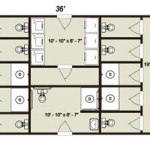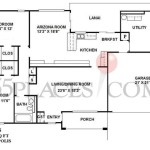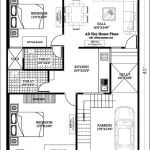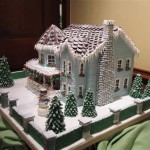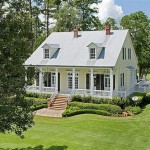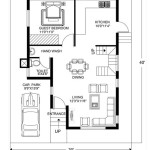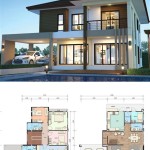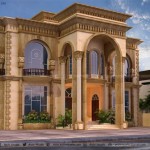Victorian Style House Plans: A Guide to the Architecture
Victorian architecture, a prominent style in the mid-19th century, is characterized by its ornate details, elaborate ornamentation, and a variety of architectural influences. Victorian houses, often grand and imposing, stand as testaments to the prosperous era of industrialization and technological advancements. Today, Victorian house plans continue to inspire contemporary home designs, blending timeless elegance with modern functionality.
Defining Victorian Style: A Multifaceted Expression
The Victorian era, spanning from 1837 to 1901, witnessed a remarkable fusion of architectural styles, giving rise to a distinct and diverse aesthetic. While there is no singular definitive Victorian style, several common features define the period's architecture. These include:
- Asymmetrical Façades: Victorian homes often feature irregular shapes and varied rooflines, creating a visually captivating and dynamic exterior.
- Ornate Details: Elaborate ornamentation, such as decorative trim, gingerbread detailing, patterned shingles, and intricate window treatments, contribute to the grandeur and individuality of Victorian houses.
- Varied Rooflines: Victorian homes feature a range of rooflines, including steep gables, dormers, and turrets, adding to the architectural complexity and visual interest.
- Multiple Stories: The Victorian era favored multi-story homes, often incorporating a variety of room layouts and functional spaces. This allowed for larger families and an expression of wealth and status.
- Bay Windows and Verandas: Bay windows, projecting outward from the main structure, and spacious verandas provided additional living space and enhanced the aesthetic appeal of Victorian houses.
However, it's crucial to remember that Victorian architecture is not a monolith. The style evolved throughout the period, with various sub-styles emerging, each bearing its unique characteristics. Some of the most prominent sub-styles include:
- Gothic Revival: This style, inspired by medieval Gothic architecture, features pointed arches, stained glass windows, and elaborate tracery.
- Queen Anne: Known for its whimsical details, asymmetrical floor plans, and decorative shingles, the Queen Anne style is often considered the most elaborate and ornate sub-style of Victorian architecture.
- Stick Style: This style utilizes exposed framing and decorative wood trim, creating a visually striking and intricate exterior.
- Romanesque Revival: Drawing inspiration from Romanesque architecture, this style emphasizes arched openings, heavy masonry, and robust detailing.
Victorian House Plans: Adapting History for Modern Living
While Victorian homes are often associated with the past, modern interpretations of the style offer a unique blend of historical charm and contemporary functionality. Today, Victorian house plans are often adapted to suit modern lifestyles, incorporating open floor plans, energy-efficient features, and contemporary finishes. These adaptations ensure that Victorian-inspired homes remain relevant and comfortable for modern families.
Key Features of Modern Victorian House Plans:
Modern interpretations of Victorian house plans prioritize functionality and comfort while preserving the style's essence. Here are some key features often incorporated into contemporary Victorian home designs:
- Open Floor Plans: Modern Victorian homes often feature open floor plans, creating a sense of spaciousness and flow between living areas. This contrasts with the more compartmentalized layouts of traditional Victorian houses.
- Energy-Efficient Features: Modern building techniques and materials are integrated into Victorian-inspired designs, ensuring energy efficiency and sustainability. This includes features like insulated windows, high-efficiency HVAC systems, and solar panels.
- Contemporary Finishes: While retaining the Victorian aesthetic, modern Victorian homes often incorporate contemporary finishes, such as stainless steel appliances, sleek cabinetry, and modern lighting fixtures.
- Customization: Modern Victorian house plans offer greater flexibility for customization, allowing homeowners to personalize their homes according to their individual needs and preferences.
By embracing the historical elements of Victorian architecture while incorporating modern updates, contemporary Victorian house plans offer a compelling alternative for homeowners seeking a blend of timeless elegance and modern practicality.

Victorian Style House Plan 5 Beds Baths 4898 Sq Ft 320 414 Plans Floor Homes

Victorian House Plans Floor The Designers

House Plan 87609 Victorian Style With 5250 Sq Ft 4 Bed Bath

Victorian Style House Plan 4 Beds 2 5 Baths 2174 Sq Ft 72 137 Houseplans Com

Plan 49571 Victorian Style With 2 Bed 1 Bath

Victorian Floor Plan Upper 132 255 Mansion House Plans

Home Plan Carrington Sater Design Collection

Victorian Style House Plans Sater Design Collection

Victorian Style House Plan 3 Beds 2 5 Baths 2590 Sq Ft 23 835 Houseplans Com

Victorian Style House Plan 3 Beds 2 Baths 1820 Sq Ft 929 91 Plans One Story Floor

